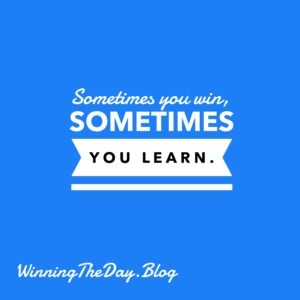Avocado toast, Insta, and TikTok can only go so far… nearly 69M Gen Z and 72M Millennials. They won’t live with Mom and Dad or Sis forever. Oh, and ahead of them? 65M Gen X’ers.
Do the Math…
#WinTheDay
#ListToLast

Avocado toast, Insta, and TikTok can only go so far… nearly 69M Gen Z and 72M Millennials. They won’t live with Mom and Dad or Sis forever. Oh, and ahead of them? 65M Gen X’ers.
Do the Math…
#WinTheDay
#ListToLast

Is The Sky Falling?
Adam Smith, some 233 years ago, nailed it with the concept of supply and demand. Unfortunately, he is not here now to experience “clickbait!” If you are reading a headline like “Home Prices Are Falling,” be skeptical.
Why? In general – in most markets – it’s just not the case. Across the US, home prices are up 2.4% to a median of $425,000 compared to last year. Are there exceptions – yes, in a few segments in a few markets – reach out to me for details, or use my Altos link to look at your specific market.
Despite significant mortgage rate increases and affordability challenges, a resilient economy combined with demographic forces of demand, there simply are not enough homes for the number of qualified buyers.
Demand did drop in 2023, yet so did supply. And Adam Smith nailed it – supply and demand forces worked. To place this in perspective, at this time in 2019, there were 822,000 homes for sale nationally: today? 546,000.
Just like Wall Street, consumers love stability and predictability. As mortgage rates stabilize and normalize, we are seeing slightly more immediate sales vs. last year. This is a leading indicator that 2024 will be stronger than 2023 from a sales perspective.
Other leading indicators? For newly homes listed, Altos is reporting a few percentage points higher on the initial list price vs. the same time a year ago, and immediate sales of those homes are slightly ahead of last year.
Price cuts? Trended over time, we see about 33%; nationally, we are at 38%, so a few percentage points higher – more than normal. I suspect these relate more to affordability than other factors.
The team over at Altos reports and updates every Monday – it’s a leading indicator – much earlier than traditional channels. I’m a fan. Win The Day!

10 Ways To Take Responsibility In Business + What Is Parkinson’s Law
And Why Should You Care?
The top 10 list for taking more responsibility in your business… starting with number 10:
Ten: Take responsibility for your thoughts, feelings, words and actions.
Nine: Blame less.
Eight: Complain less.
Seven: Refuse to take anything personally.
Six: Make yourself happy.
Abraham Lincoln said this more than 150 years ago, “Most folks are about as happy as they make up their minds to be.”
Five: Live more in the present moment.
Four: Use the power of intention.
Three: Work expands to the time allocated (Parkinson’s Law)
Two: Start with and assume positive intent.
One: What would #1 be for you?
What would #1 be? How about: “Don’t place your monkey on my back?”
What is Parkinson’s Law?
Parkinson’s Law is the old adage that work expands to fill the time allotted for its completion.
The term was first coined by Cyril Northcote Parkinson in a humorous essay he wrote for “The Economist” in 1955. He shares the story of a woman whose only task in a day is to send a postcard – a task which would take a busy person approximately three minutes. But the woman spends an hour finding the card, another half hour looking for her glasses, 90 minutes writing the card, 20 minutes deciding whether or not to take an umbrella along on her walk to the mailbox … and on and on until her day is filled.
Read his original article here.
Why should you care?
Deadlines can cause procrastination or even prompt people to fill their time with trivial matters.
Implication?
One: Assign a “time limit” to everything. Example: in the next hour, I will complete ____. If you say, it will take 30 minutes to get your shipping done or 90 minutes, both are right. The work will expand to the time given. Allocate your time!
Two: Putting projects into the context of larger goals and creating timelines in days rather than weeks are two strategies to help overcome Parkinson’s Law.

Good vs. Bad?
Think about it. When you say no to one thing, you are really saying yes to something else.
Have you discovered – as I have – that business isn’t always a choice between good and bad. It’s more often a choice of good, better, or best.
Every choice has a sacrifice.
Being confident, being clear in the choice to say “no” or “yes,” and moving forward powerfully is a “skill” I’m intentional about continuously improving.
So, as we enter into December and the new year, may your No be No and your Yes be Yes.
When I say no to one thing, I’m really saying yes to something else.
Every choice has a sacrifice.
Good, better, best!
Faith is an activator. Fear is also an activator. Opposing activators.
The spirit of fear and anxiety is opposite to the spirit of faith. The two cannot cohabitate. One will, by nature, rule out the other.
So, which can we choose to activate today – fear or faith?

Someone asked me recently, “Are you being faithful with your time?” It made me stop and reflect. I honestly had to give myself an 8 out of 10. We all strive to make the most of our time—whether it’s nurturing our faith, strengthening family bonds, or advancing our careers. But the reality is, distractions are everywhere, constantly vying for our attention.
The question then becomes: how do we prioritize what truly matters? How do we “keep the main thing the main thing”?
The answer is simple: intention and accountability. It won’t happen by accident. We must make conscious choices in each moment, aligning our actions with our values and goals. As leaders, we understand the power of intention. It’s the driving force behind every successful endeavor. But intention alone is not enough. We also need accountability.
Accountability is the engine that drives us to follow through on our intentions. It’s about having systems and support in place to keep us on track. For me, that means working with a coach and using tools like a weekly review process. This process involves reflecting on key areas of my life—faith, fitness, finances, family, habits, and learning—asking myself tough questions and identifying areas for improvement. This structured reflection helps me stay focused on what matters most and make necessary adjustments.
This isn’t about achieving perfection; it’s about continuous improvement. It’s about recognizing that time is our most precious resource and making a conscious effort to use it wisely.
So, I ask you: how are you managing your time? Are you being intentional with each moment? What systems of accountability do you have in place?
If you’re looking for support in developing greater intention and accountability in your life, I’m here to help.

Here’s the deal this week – the 5 words that kill more dreams than alcohol, drugs, addiction, and afflictions:
I don’t feel like it.
Of course, you don’t feel like it – do it anyway tomorrow and this week. Build those relationships, make those calls, write those notes, and launch that campaign.
ACTION creates insight and momentum. More DOING!
Of course, you don’t feel like it, of course, you might not be 100% ready, but of course it could always be better.
Do it anyway.
One of my leadership mentors, General George Patton said it best, “A Good Plan, Executed Now, Is Better Than a Perfect Plan Next Week.”

It’s TOUGH out there….
Facing The Giants. Have you seen it?
It’s a story of a high school football team that had nothing going for them – personally or as a team.
Yet, despite all odds, they end up winning the state championship.
How is that even possible?
Lesson 1 – Don’t Write Off A Bad Day, A Bad Week, or a Bad Month As A Loss Before It’s Over
Lesson 2 – Once You Hit A Goal, Don’t Give Up
Lesson 3 – Always – Give Your VERY Best
Lesson 4 – You Inspire Others When You Perform At Your Best
Lesson 5 – No Matter What, Refuse To Walk Around Defeated
In the end, we all know the CHOICE is ours. Yet I know – you and I – have too much to offer to play small the rest of this year.
When we may make a touchdown, or drop a pass, or heck, even fumble the ball, we get back up.
Let’s play BIG as we close out the year and give our VERY BEST.
–

NAR, Lawsuits, and Doing The Right Thing
During the COVID lockdown, I wrote a blog titled, “Doing The Right Thing Is Always The Right Thing,” today’s unveiling of the recent lawsuit settlements brought that to mind.
I’m writing this from Tahoe, where I was part of a panel with the Realty Alliance on scaling your business. All the companies attending are the best of the best, yet some have 100 years or more of operations. You create a 100-year enterprise by always doing the right thing.
Some 20 years ago, I worked with buyers, and a co-op commission came up that was $1.00. Because I had adequately educated my buyer clients, I could show homes of any commission level—the right thing.
Today’s news released by all the major real estate news outlets summarizes some of the settlement points; only one is breaking news, in my view. The summary:
Significant
Implication: Significant policy discussion at the local associations. And the decoupling of NAR, state associations, and MLS. The watch out – this could be like CPA’s not having GAP (generally accepted accounting principles). The wild wild West will not serve the consumer.
I’m a fan of the local and state associations and NAR. I see the value, the advocacy, the standards, the services like RPR, economic reports and research and so much more. More on this in another post.
I’m also a fan of freedom of choice… those who deliver the most value will not struggle to maintain members.
The Right Thing – Nothing Really New
The settlements also include the following:
The implication here? Nothing new – for over 20 years I’ve taught my agents to do the same, and executed my practice with these principles. Bringing these practices to a higher level of awareness is a good thing. Yet here is what I know, those who deliver the most value will not struggle to create thriving real estate practices.
For the vast majority of my REALTOR® colleagues – regardless of your brands position – is leadership and service not abdication. Get involved and be the change you want to see.
Doing the right thing is always the right thing!
The Case Summary:
The implication? List to last. Control your destiny. Become the best listing agent in your market.
#WinTheDay
